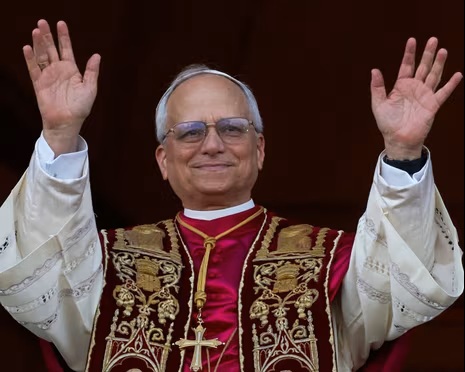The First Amendment Protects Religion, Not Neutrality
On June 20, the United States Supreme Court ruled, in American Legion et al. v. American Humanist Association et al. that a 94-year old cross memorializing local fallen World War I soldiers and standing on public land in Bladensburg, Maryland, was not a violation of the First Amendment. The 40-foot cross had been under attack for years, and the Fourth Circuit Court of Appeals had found it infringed the First Amendment, a ruling the Supreme Court overturned. The ruling came just as Catholics in the United States begin their “Fortnight for Freedom” to reflect on religious rights.
Although the Supreme Court ruled 7-2 in favor of the cross, the majority split six ways on its reasoning behind the outcome. Ruth Bader Ginsburg wrote a dissenting opinion, in which Sonia Sotomayor joined. The majority largely divided over how to understand the symbolism of an almost century-old cross monument today, and whether the Lemon test (a judicially invented test, named after a 1971 Supreme Court ruling, Lemon v. Kurtzman, for determining whether a law under constitutional challenge violated the First Amendment). More on Lemon some other day.
One could say that the six-way division over the rationale behind American Legion reflects the mess the Court has made of First Amendment jurisprudence for almost three-quarters of a century. The skeptic might ask whether this approach does not in practice incentivize a way of “judging” in which one first figures out the desired outcome and then devises the reasoning to get there — all the while pretending that there is some mystic principle of judicial constitutional insight, available at random to at least five judges who, in the name of “rule of law” and respect for principle (stare decisis) then choose to illumine the rest of us, the people. The late Senator Daniel Patrick Moynihan — no closet conservative — called out this charade years ago. Noting that the Court had ruled that the First Amendment allegedly allowed states to assist Catholic schools to buy textbooks but that it supposedly prohibited them from helping schools buy maps, he asked acidly — “what about atlases?”
If the Court’s majority seemed indisposed toward claiming that the First Amendment requires what Richard John Neuhaus called a “naked public square” — at least in practice if not in theory — then the minority was very clear to insist that the First Amendment supposedly requires it. That’s why I focus on Ruth Bader Ginsburg’s dissent.
Ginsburg declared up front, in the second paragraph of her dissent, that “[d]ecades ago, this Court recognized that the Establishment Clause of the First Amendment to the Constitution demands governmental neutrality among religious faiths and between religion and nonreligion. See Everson v. Board of Education of Ewing.” This is precisely where, in my opinion, First Amendment jurisprudence went off the rails. It has led to seven decades of the Court sitting as a Delphic Oracle, divining how to apply the First Amendment in a society whose institutions, the Court itself acknowledged, “presuppose a Supreme Being” (Zorach v. Clauson, 343 U.S. 306, at 313, an opinion written by William Douglas, again, no closet conservative).
We could get into extended hairsplitting over case law, in an attempt to tease (torture) out the outcome we want. That presumably would be the course of a lawyer interested in protecting stare decisis, at least as today’s “mainstream” wants to conceive precedent.
I will depart from that approach for three reasons: (1) I am not a lawyer; (2) I believe that the law — especially constitutional law — is too important to be left to the lawyers; and (3) I agree with Justice Thomas, in his June 17 concurrence to Gamble v. United States, that we need a more intellectually honest (and humble) approach to stare decisis. Rather than vainly “honoring” our foundational document by teaching as constitutional doctrine rules made up by lawyers (Matthew 15:9, revised), let’s admit that the Court does not have a charism of infallibility and “[w]hen faced with a demonstrably erroneous precedent … should not follow it.”
After all, that’s exactly how we got to Everson, the ruling on which Ruth Bader Ginsburg pegs her “neutrality” doctrine.
Reading Ginsburg’s dissent, one notices two things. First, while she cites plenty of precedents, they all postdate Everson. The dissent leaves the impression that, for 160 years, eight generations of Americans somehow managed to overlook the Founders’ supposed “neutrality” between religion and non-religion, a constitutional sleeping beauty that waited until 1947 for Hugo Black to awaken it from legal slumbers. Second, Ginsburg’s favorite contemporary justice to invoke is John Paul Stevens, whose religious antipathy put him outside even the Court’s mainstream.
So why do I think Ginsburg’s “neutrality” doctrine is wrong?
Put bluntly, because I think the First Amendment protects religion, not neutrality.
If we go back to our national origins, the people who settled colonial America came here for religious freedom. Puritans, Pilgrims, Quakers, Catholics, Episcopalians, Schwenkfelders, Moravians and Methodists came here to practice religion, not neutrality. Indeed, even the idea of legal toleration emerged in Catholic Maryland, not Puritan Massachusetts. Neutrality was at best a means to achieve the end of religious freedom.
That was the historical context in which the First Amendment emerged. Accordingly, I would argue that the value that the First Amendment seeks to protect is religion. As Neuhaus noted, religion is the first right among five enumerated in that Amendment.
I also agree with Richard John Neuhaus’ argument that the First Amendment contains one clause, not two, dealing with religion. Advocates of modern Supreme Court First Amendment jurisprudence have separated “no establishment” from the “free exercise of religion” provision of the First Amendment. They have set them at odds with each other — which is where the “neutrality” doctrine becomes expedient — and thrust the Court into the role of a sitting constitutional convention, perennially adjudicating the ongoing “conflict” between “no establishment” and “free exercise.”
Neuhaus argued that the “conflict” comes not from the Constitution but is of the Court’s own making. If we understand the First Amendment as protecting religion, an understanding that appears to tally with America’s historical experience in the 17th and 18th centuries, then the Founders wanted to protect religious freedom. To that end, they imposed a federal “no establishment” provision so that the United States would not have a state “Church of England.” But there is little evidence that the Founders intended to sanitize public life and culture from religion in general. The much vaunted “wall of separation” (which Ginsburg mentions in her dissent) is nowhere in the Constitution but comes from Thomas Jefferson’s private correspondence. We should also observe: (a) Jefferson was not part of the Constitutional Convention; (b) his letter was written two decades after the Constitution; and (c) Deism à la Thomas was unrepresentative of both colonial religious attitudes and even the views of most other Founders. Given, then, that the First Amendment can be plausibly read in a way that is not schizophrenic about religion, then perhaps we might conclude that what that the religious provision the Founders joined should not by the Court be put asunder.
The object of the First Amendment’s protection is religion, not neutrality. Neutrality is at best a means to protect religion. It should be evaluated and judged as a means, i.e., how well does it protect its end? To the degree that it undermines that end, it should be abandoned. But, I repeat, we need to be crystal clear about one thing: the First Amendment protects religion, not “neutrality.”
There seems, however, to be two approaches to the relationship of religion and neutrality. They are in conflict, and they are competing for ascendance and recognition. Unless we are clear about the difference, much mischief will ensue.
Let’s call these two approaches “good faith” and “bad faith.” A “good faith” approach is one that recognizes that the purpose of the First Amendment is the protection of religion, with neutrality serving as a subsidiarity tool to that end. A “bad faith” approach is one that treats neutrality as an end in itself. It treats the First Amendment as requiring a “neutral,” religiously disinfected public life. The mauvaise foi version of “neutrality” employs the First Amendment’s protection of religion to exorcise any “intrusion” of religion into the public square.
Under that version, the fact that the “right” of some motorist on Baltimore Avenue in Bladensburg not to be “offended” by seeing the cross on public property alongside a highway trumps the rights of veterans (who originally built and paid for the cross) or even the community (the Maryland National Park and Planning Commission, which owns the land today) to memorialize the dead doughboys of Prince George’s County.
[I recognize that the American Humanist Association also took umbrage to public funds being used to maintain the cross memorial since 1985, when Maryland took it over, and invoked that taxpayer argument in its case. It’s a puzzlement that the secularist wing of the Court is solicitous about taxpayers claiming offense under “no establishment” but ignores taxpayers claiming offense under “free exercise.” It was Ginsburg (with Sotomayor) who wrote the primary dissent from the majority judgment in Burrwell v. Hobby Lobby, protecting the religious freedom rights of employers who did not want to subsidize abortifacients under their health insurance coverage].
Besides its historical grounding, I would also argue philosophically for reading the First Amendment as protecting religion and treating no establishment (and neutrality) as means toward the end of free exercise. I agree with the position of the contemporary Polish political philosopher, Zbigniew Stawrowski, who argues in his Clash of Civilizations, or Civil War that there is really no such thing as “religion versus non-religion.” Everyone, he insists, has some absolute value to which everything else is subordinate. That is his religion. Stawrowski also insists that the choice of that absolute value ultimately cannot be wholly proven rationally: in the end, that choice rests — even in the case of agnosticism or atheism — on an act of faith in those ultimately unproven premises.
So everyone is religious, even if their “religion” is agnosticism or even atheism. Why, then, should those latter two “faiths” be entitled to trump any other when it comes to how society treats the phenomenon of religion in public life? Why have those two “faiths” become the de facto established churches of public life? And is not “neutrality” perhaps a way to pretend that this establishment isn’t?
I would hope that the Court finds a more coherent hermeneutic to guide its First Amendment jurisprudence than its current model which, as Ginsburg correctly notes, finds roots in Everson. Unlike her, I find them to be the roots of a bad seed.
In her dissent, Ginsburg opines that the “state’s choice to display the cross on public … spaces conveys a message of exclusion. It tells [some] they ‘are outsiders, not full members of the political community.’” Never does it dawn on RBG that the refusal to allow such displays in public spaces, even if they resonate with other parts — perhaps even majorities — of the population also conveys a message of exclusion. It tells believers that they are outsiders, not full members of the political community until they strip down and leave their religious identity and values in the locker room. It is highly debatable whether the Founders intended such an admission price on the public square.



